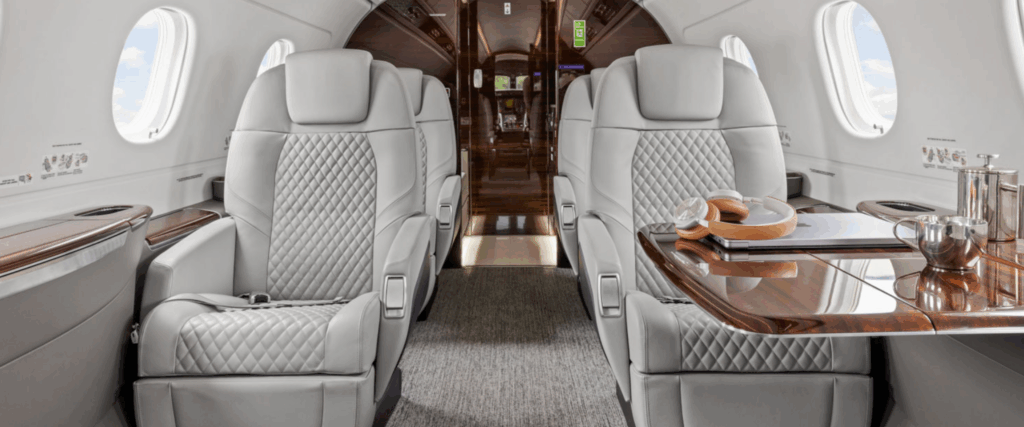Financing a business aircraft is not simply a matter of signing a loan agreement. It is a sophisticated exercise in financial strategy, capital allocation, and long-term planning. In 2025, the financing environment is more complex than ever. Interest rates remain elevated, lenders are more selective, and new players such as boutique finance firms and private equity groups are reshaping the landscape. For buyers, understanding the structures available — and the trade-offs each one carries — is critical to making an informed decision.
WHY FINANCING MATTERS
Even ultra-high-net-worth individuals and corporations often choose to finance rather than purchase outright. Why? Because aircraft are depreciating assets. Leveraging financing allows buyers to preserve liquidity, maintain flexibility, and optimize tax efficiency. The right financing structure can turn a aircraft from a cash drain into a well-aligned business tool.

TYPES OF FINANCING
TRADITIONAL BANK LOANS
- Structure: Typically fixed or floating interest rates, with terms ranging from 5 to 10 years.
- Advantages: Straightforward, well-understood, and often less expensive than more complex structures.
- Considerations: Banks often require strong credit, audited financials, and may limit financing to newer aircraft.
ASSET-BASED LENDING
- Structure: Financing is secured primarily against the aircraft’s value rather than the borrower’s balance sheet.
- Advantages: Useful for buyers with complex financial structures or those seeking to minimize personal guarantees.
- Considerations: Lenders closely monitor aircraft condition, market value, and maintenance status. Off-program engines or pending inspections can complicate approvals.
OPERATING LEASES
- Structure: The buyer pays predictable monthly payments for use of the aircraft, returning it at the end of the lease term.
- Advantages: Lower upfront cost, flexibility, and potential off-balance-sheet treatment. Attractive for corporations that want predictable budgets.
- Considerations: No ownership equity is built, and customization may be restricted.

FINANCE LEASES (HYBRID STRUCTURES)
- Structure: A blend of loan and lease features, often allowing ownership transfer at the end of the term.
- Advantages: Provides tax advantages of ownership with cash flow flexibility of a lease.
- Considerations: Terms can be more complex, requiring expert negotiation.
WHAT LENDERS LOOK FOR
Regardless of structure, lenders want assurance that both the borrower and the aircraft are sound investments.
- Borrower: Credit strength, liquidity, and cash flow.
- Aircraft: Age, pedigree, maintenance status, and marketability.
- Operations: Who will manage the aircraft? Lenders prefer professional management and experienced crews.
TRENDS IN 2025
- Higher Rates, More Creativity: Elevated interest rates are prompting buyers to explore hybrid financing or negotiate prepayment flexibility.
- Private Equity and Boutique Lenders: New entrants are providing tailored solutions for high-net-worth individuals and corporations that may not fit traditional bank profiles.
- Shorter-Term Financing: Some buyers are opting for shorter terms, bridging ownership until a new delivery arrives.
- Increased Scrutiny: Lenders are more cautious about older aircraft, particularly those without program coverage or upcoming major inspections.

STRATEGIC CONSIDERATIONS
Financing isn’t just about affordability — it’s about aligning aircraft ownership with broader financial goals. For some, financing preserves cash for core business growth. For others, it provides tax efficiencies through accelerated depreciation. A well-negotiated financing structure can reduce risk, enhance flexibility, and preserve exit options when it’s time to upgrade.
Financing a business aircraft is not one-size-fits-all. Each buyer’s circumstances, goals, and aircraft requirements demand a customized solution. The key is to evaluate options strategically, negotiate terms carefully, and align financing with both mission profile and financial strategy.
At Holstein Aviation, we help clients navigate this complexity. Our IADA-certified professionals maintain relationships with leading global lenders, boutique finance firms, and private equity providers. By understanding your mission, budget, and long-term plans, we match you with the right financing structure and negotiate terms that maximize flexibility and value. With Holstein Aviation, financing becomes not a hurdle, but a strategic advantage in your aircraft acquisition.